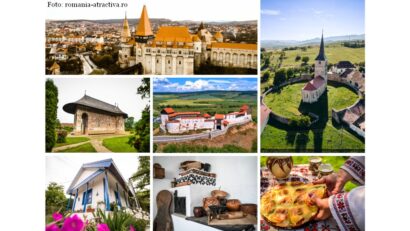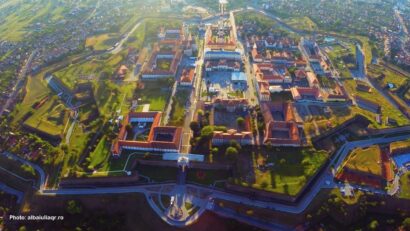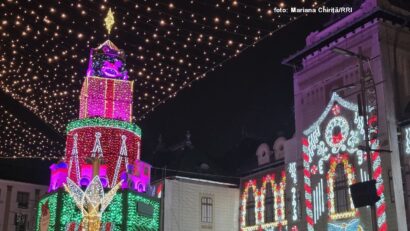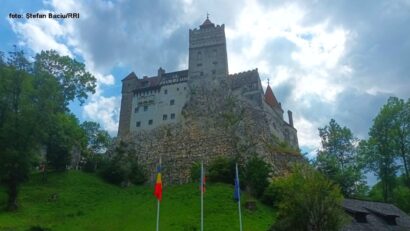Holiday on the Southern Romanian Black Sea Coast
This edition is part of our ongoing contest Holiday on the Black Sea Coast

Daniel Onea, 20.08.2015, 13:16
Our journey today starts in the resort town of Mangalia. It is a destination for those who want to have fun on the Romanian Black Sea Coast, undergo spa treatment and mainly for history lovers. There are a lot of tourist attractions in the area: the ruins of the Callatis fortress, the “Esmahan Sultan” Mosque, the Movile cave, which is a speleological reserve, the Limanu cave, a nearly 4-km-long underground labyrinth and the Murfatlar vineyard, the production site of some of our countrys finest wines, recipients of international prizes. Worth mentioning is that in 1959, the oldest papyrus in Europe, dating back to the 4th century B.C. was discovered in Mangalia. It was restored in Moscow and is currently on display at the “Callatis” Archaeological Museum in Mangalia.
Dumitru Filip, director in the tourism division of the Mangalia Town Hall, told us more about Mangalia.
“Few towns in the world can boast such a string of resorts on a sea coast, which in our case is the Black Sea Coast. Our advantage is that Mangalia is a significant tourist destination in the Romanian tourist landscape. We can accommodate some 120,000 people in hotels with various levels of comfort. The municipal town of Mangalia and the adjacent resorts are well-known spas too. That means that in addition to summer tourism, we have a well-balanced offer of medical procedures and spa treatments. We benefit from a number of special physiotherapeutic facilities. There are a few hotels offering spa treatment and a few hotels that, in addition to spa procedures, offer maintenance therapies. Mangalia does not have a large number of residents. The holiday atmosphere prevails in the resorts. Besides the hotels, we boast a number of facilities for holidays to be as pleasant as possible, such as terraces, restaurants with a diverse cuisine and special sports grounds.”
Why should you choose Mangalia as a tourist destination? Cristian Radu, the mayor of Mangalia explains
“We have a 9-km-long sea coast, a forest of over 500 ha, six lakes, therapeutic mud, ten thermal springs. We started a number of projects with European funding. We started building a 9 km long pedestrian seafront, all along the seacoast. We have an over 90-year old stud farm boasting Arabian thoroughbreds. We try to reposition those resorts on the worlds tourist map. Mangalia is the oldest settlement in Romania. We are now capitalizing on the Callatis fortress through a European project. In the past, the thermal springs used to be visited by a lot of foreign tourists. The season started in May and ended in late September. Tourists would come for treatment to Mangalia. Now we plan on receiving as many foreign tourists as possible and offer them spa treatment. The mud they get here is unique in Europe. We provide quality services at affordable prices.”
Tatiana Odobescu is director of the Callatis Cultural Complex, which includes four cultural institutions: the House of Culture, the Archaeological Museum, the Municipal Library and the Arthur Rimbaud French Library.
“We have important vestiges which we are proud to show to foreign tourists. The Archaeological Museum in Mangalia highlights the history of these places. There is a string of Greek fortresses on the Western Black Sea Coast and Callatis is one of them. It was an over 2500 year-old Dorian fortress with quite an interesting and rich history. If you go for a walk in Mangalia, you will see some of those vestiges that were dug out. The project Callatis – History on the Black Sea Coast aims to preserve and capitalize on three tourist sights in the Mangalia area. The story of the Mangalia vestiges is much older. In the early 20th century, historians took action to move the town area beyond the archaeological site. They failed to do so and nowadays, the modern town stretches over an area beyond those vestiges. Some places however have remained steeped in history. Three sights are quite visible: the wall of the Callatis fortress in the North, the east and the northwestern corner and the Paleo-Christian tombs. The research works have been completed and weve reached very interesting findings, which well make public later on. An architectural survey is going to be conducted to find ways of capitalizing on those sights as best as we can. We aim to lay out an open-air architectural park. When tourists come to visit the “Callatis” Museum, they can also hear the story of those sites. A map in hand, tourists can see them next to the museum. Basically, we want to recreate part of the history of those places.“
In the South of the Romanian Black Sea Coast, there are hotels for a wide range of tourists. Many of them target young people, families with children or provide spa treatments.
Andrei Tiganas is the manager of the Delta Hotel in Jupiter resort and the California Hotel in Cap Aurora resort:
“For years, we have been targeting families with children. Children actually get a royal treatment. We offer them entertainment programmes from morning till night. We have made available a beach sector for them, the Childrens Beach. There is a playground called Baby Land. We run creative workshops, we have a ballet and dance centre and a school of childrens theatre. We keep them busy from morning till night. All those services and facilities are free of charge and are part of our accommodation offer.“






























